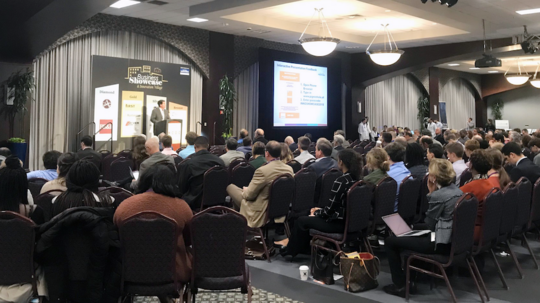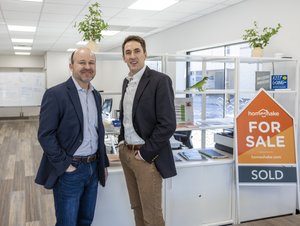
In December 2019, UBI Global named Cincinnati’s HCDC one of the top 10 incubators in the world. This accolade — part of UBI Global’s World Benchmark Study that maps the global innovation ecosystem — is considered an honor for the regionally renowned incubator. But, given HCDC has nurtured more than 300 resident companies and financed more than $1 billion in projects since it launched more than 30 years ago, the Cincinnati startup community can’t be too surprised.
HCDC launched in 1983 after a massive G.M. factory shut its doors. It was a crushing economic blow to the community, and area leaders knew they had to find a way to reinvigorate the area — as well as provide entrepreneurial assistance to those who’d been laid off.
Many ideas were considered for what that move would be, but thought leaders landed on the concept of a three-pronged organization. It would offer business incubation, business lending and economic development services.
The concept was brought to life thanks to federal funding, according to HCDC business coach Antony Seppi. And since then, it's allowed the organization to help more than 300 startups and finance over $1 billion in projects. As a result, "tens of thousands" of local jobs have been born of their efforts in the nearly 40 years of its existence.
It was not these achievements alone that made HCDC stand out to UBI Global. Seppi said that the success rate of HCDC graduate startups was a key element to UBI Global’s interest.
“After we transition companies out of the incubator program, we score really well in terms of graduates from our program being successful,” he said. “We have a pretty rigorous program and put our companies through different milestones we ask them to achieve. I think that’s a big thing that plays into startups being successful in the community.”
HCDC typically graduates six to eight companies a year.
These alumni all have something in common besides their cohort: they primarily represent the physical/applied sciences, engineering and information technology industries, spaces that are often aligned with the Cincinnati ecosystem.
“Our goal here is not to be the next Silicon Valley,” Seppi said. “We have to leverage our own assets in this region, and we have the unique assets here to do that.”
One of HCDC’s most recent success stories is Veelo Technologies, the startup manufacturer of lightweight, conductive materials. Veelo was the “model startup” for HCDC’s programming, according to Seppi.
“They reached success, and we transitioned them out into the community,” he said. “Our number one goal is to keep them in the community to hire skilled and talented people in the region.”
Since its graduation, Veelo was able to scale from four to 24 employees, all why staying in the Queen City.
It's just one of HCDC's successful participants. But Seppi emphasizes that HCDC's ability to work so well is in large part because of Cincinnati’s robust entrepreneurial ecosystem.
“We collaborate with organizations like Cintrifuse, Cincy Tech, Queen City Angels, the Regional Economic Development Initiative — and that’s what sets Cincinnati apart,” Seppi said. “The willingness for these groups to work together to build an ecosystem that’s ripe and conducive to leveraging our own unique assets — I think that’s unique to this region. Everyone’s willing to jump all in.”








